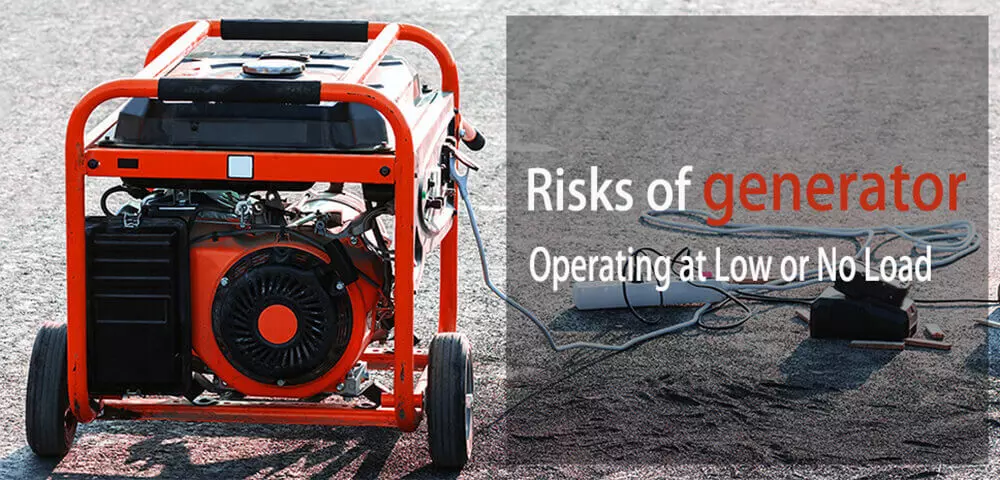14Apr 2024
table of contents

Generators now play indispensable role in industry, ensuring uninterrupted power to residences, commercial establishments, medical facilities, and various other sectors. The inconveniences and dangers of power outages are well known to all. Hence, generators serve as dependable backups, mitigating the impact of outages. Despite their significance, they are complex machines that require a certain level of understanding to operate effectively and maintain properly.
One of the overlooked but important aspects of generator operation is the effect of low load or no-load operation, will lead to a range of negative consequences for generator, including performance deterioration, unforeseen malfunctions, or even complete breakdowns.
In this article, BISON will dive into the complexities and potential risks of running generator at low or no load, understand the consequences of running at low or no load, and provide you with preventive measures you can take to avoid a bad situation occur. Hopefully this will provide you with the knowledge to properly manage your generator to improve its performance and longevity.
Poor combustion: When generator operates at low load or no load, the oil air mixture within engine combustion chamber may not fully ignite or burn efficiently.
Low cylinder pressure: Insufficient load to generate pressure within the cylinder can lead to decreased engine performance, resulting in lower power output and heightened wear on internal components.
Cold temperatures: Running a generator at low load levels can cause lower operating temperatures, which can negatively impact the engine's efficiency and performance.
Vitrification: Hot combustion gases escape through the piston rings and immediately burn the oil that lubricates the cylinder walls. The result is a smooth, enamel-like glaze along the cylinder walls, which covers the grooves that contain the cylinder's lubricant and deliver it to and from the crankcase. This leads to increased wear due to insufficient lubrication and increased oil consumption.
Reduce piston ring sealing and carbon deposits: A lack of generator load will cause a drop in cylinder pressure, leading to inadequate piston ring sealing. Moreover, incomplete combustion can result in carbon deposits on internal engine components, further diminishing efficiency and escalating wear.
Reduced efficiency: Because generators are typically most efficient when operating at or near maximum load. During low load operation, the combustion process is incomplete, necessitating more fuel to generate the same amount of electricity.
Increased exhaust "white" smoke and increased pollution: During low load period, generator insufficient combustion leads to production of unburned fuel, observable as white smoke emitted from generator exhaust, so that reduces inefficiency, and contributes to air pollution by releasing elevated levels of harmful pollutants, such as carbon monoxide, nitrogen oxides, and particulate matter.
The above results are a cumulative impact on the generator set. First, users may observe unexplained power losses and intermittent poor performance. This is caused by operating inefficiencies and accelerated component wear. Soon, components can begin to fail, leading to unscheduled maintenance and increased downtime. At one point, the glass and carbon deposits became so severe that completely stripping the engine, reboring the cylinders, and machining new honing marks was the only solution. There is no doubt that running a generator regularly at low or no load will eventually lead to complete generator failure.

At some point, the generator will undoubtedly need to operate at less than optimal load. If this is not a regular and long-term occurrence, it will not cause any damage to your generator.
No-load operation shall not exceed 15 minutes. For low load operation you should contact your manufacturer who will be able to advise you on safe low load operation values and durations. After the generator is running at low load, the load should be increased for a short period of time to increase the temperature and pressure. A "load bank" test should be performed once a year, in which the generator is run for a few hours to remove any deposits.
If run and maintained properly, a generator can ensure you never lose power, regardless of whether power is available from the grid. Meanwhile, a combination of generator and UPS systems can both provide uninterrupted power, and protect sensitive equipment from power surges and fluctuations.
In this article, BISON explore the often overlooked dangers associated with running a generator at low or no load, leading to consequences ranging from engine damage to poor combustion, reduced efficiency, and increased pollution. And how to take effective measures to prevent these problems to properly utilize the generator.
For those looking for a reliable, efficient power solution, we introduce BISON generator. BISON generators feature advanced features designed to optimize performance and minimize environmental impact, giving you peace of mind during emergencies and power outages. Don't compromise on safety and reliability - invest in a BISON generator today and ensure uninterrupted power to your home or business.
inquiry form here
BISON BLOG, All the latest news and views from Bison Machinery.